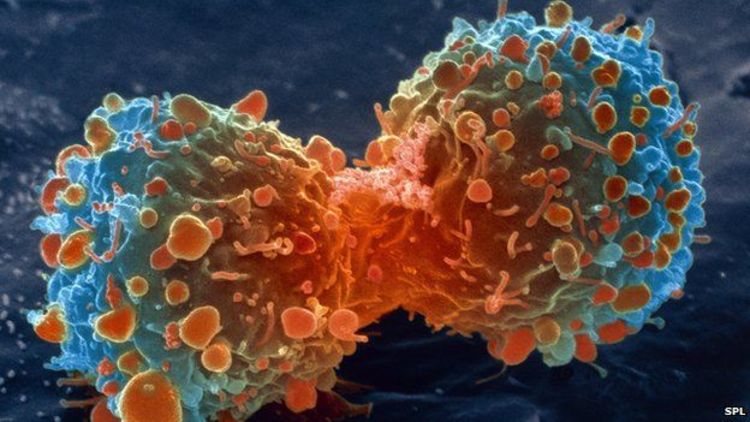
The Sunday Mail

Tafadzwa Kadani
For many Zimbabweans, a cancer diagnosis is a death sentence.
T
he chronic ailment is now one of the leading killer diseases in the country overtaking HIV/Aids and the Ministry of Health and Child Care predicts a further increase in deaths attributable to cancer.
Cancer prevalence in the country is expected to double in the next 20 to 40 years and this is mainly attributed to lack of proper medical facilities that deal with the disease. Being a non-communicable disease, “cancer” is a generic term for a large group of diseases that can affect any part of the body. Other terms used are malignant tumours and neoplasms.
One defining feature of cancer is the rapid creation of abnormal cells that grow beyond their usual boundaries, and which can then invade adjoining parts of the body and spread to other organs.
The latter process is referred to as metastasising and metastases are the major cause of death from cancer.
Dr Anderson Chimusoro of the World Health Organisation says there are a number of things that can be attributed to being leading causes of cancer.
“Lack of awareness and hence late reporting, lack of awareness of risk factors and hence continued indulgence, inadequate tools for screening of cancers and poor access to medicines and technologies for treatment of cancer among others have led to the increase in cancer cases in Zimbabwe,” he said.
“Tobacco use is the most important risk factor for cancer causing around 20 percent of global cancer deaths and around 70 percent of global lung cancer deaths.”
There are more than 4 000 chemicals in tobacco smoke, of which at least 250 are known to be harmful and more than 50 are known to cause cancer, explains Dr Chimusoro.
In Zimbabwe, WHO is working with Government to develop the National NCD Strategic Plan.
WHO, with other partners also supported the development of the cancer strategy, and is currently supporting development of the Cervical Cancer Strategy and will provide equipment for screening the disease.
The target for prevention is to focus on the risk factors and in particular tobacco smoking and this can be successful with the involvement of all stakeholders in this area which include agriculture and education among others.
WHO has also made available key documents to guide countries in the prevention, detection and management of cancers and continues to be available to provide technical support to Zimbabwe in these areas, says Dr Chimusoro.
Cancer Association of Zimbabwe information, research and evaluation officer Mr Lovemore Makurirofa said Government needs to improve cancer-related services.
“The Government needs to improve when it comes to the provision of cancer services that is decentralising and accessibility (availability and affordability). These services include screening and diagnosis and at an affordable price,” explained Mr Makurirofa.
He also cautions that the cancer statistics provided by the Health Ministry are an under-estimation.
“These are people that have accessed the services, those
that cannot access these services are not included in the statistics, the numbers are way above what the ministry gets,” added Mr Makurirofa.
“As the Cancer Association of Zimbabwe we are involved in a number of programmes that are aimed at complementing Government’s efforts to minimise the impact of cancer in the county.
“We do awareness programmes, cancer talks with workers on prevention, signs and symptoms. We also offer cervical screening and clinical breast examination at US$10 and US$5 respectively at our offices in Harare.”
Mr Makurirofa says it is critical that the Health Ministry conduct extensive information dissemination on cancer in rural areas.
The Cancer Association of Zimbabwe has rural outreach programmes where they offer education and free services such as cervical screening. However, many areas are left uncovered due to financial constraints.
“We want to avoid a situation where people incur indirect costs such as transport and accommodation due to cancer in such harsh economic conditions. Government has to intervene,” Mr Makurirofa exhorts.
Dr Chimusoro points out the need for partnerships to this end.
“Drivers of NCDs are largely outside the health sector and would require a multi-sectoral approach, that is taking care of the environment, lifestyle (smoking in particular), unhealthy diets, and harmful use of alcohol. Broader stakeholder participation is required with high level advocacy focusing on policy issues that address these risk factors,” he says.
WHO continues to provide capacity building to health workers in cervical cancer – one of the major cancers in the country – diagnosis and management.
The Zimbabwe National Cancer Registry shows that cancer is more pronounced in men than women.
Men are mostly affected by prostate cancer which accounts for a staggering 17,3 percent, followed by Kaposi sarcoma (14,3 percent) and non-melanoma skin cancer (7,6 percent); while women are mostly affected by cervical cancer (33,2 percent), breast cancer (11,6 percent) and Kaposi sarcoma (5,9 percent).
Dr Annah Mary Nyakabau, a clinical oncologist consultant at Parirenyatwa Hospital, says many cancer deaths are HIV-related.
In her joint presentation about cancer control in Zimbabwe (2013), it was established that 60 percent of cancer cases are HIV-related, there are 5 000 new cancer cases per annum and 1 500 cancer-related deaths yearly.
“There is a dire need to fund cancer programmes and co-ordinate and integrate cancer control activities,” said Dr Nyakabau.
“Despite prevailing economic challenges, Zimbabwe has managed to make some positive strides in cancer control.”
Government currently has Hepatitis B vaccination, cervical cancer screening and cervical cancer demonstration projects ongoing. There is also new equipment at Parirenyatwa Radiotherapy Centre and training of staff in new treatment techniques.



